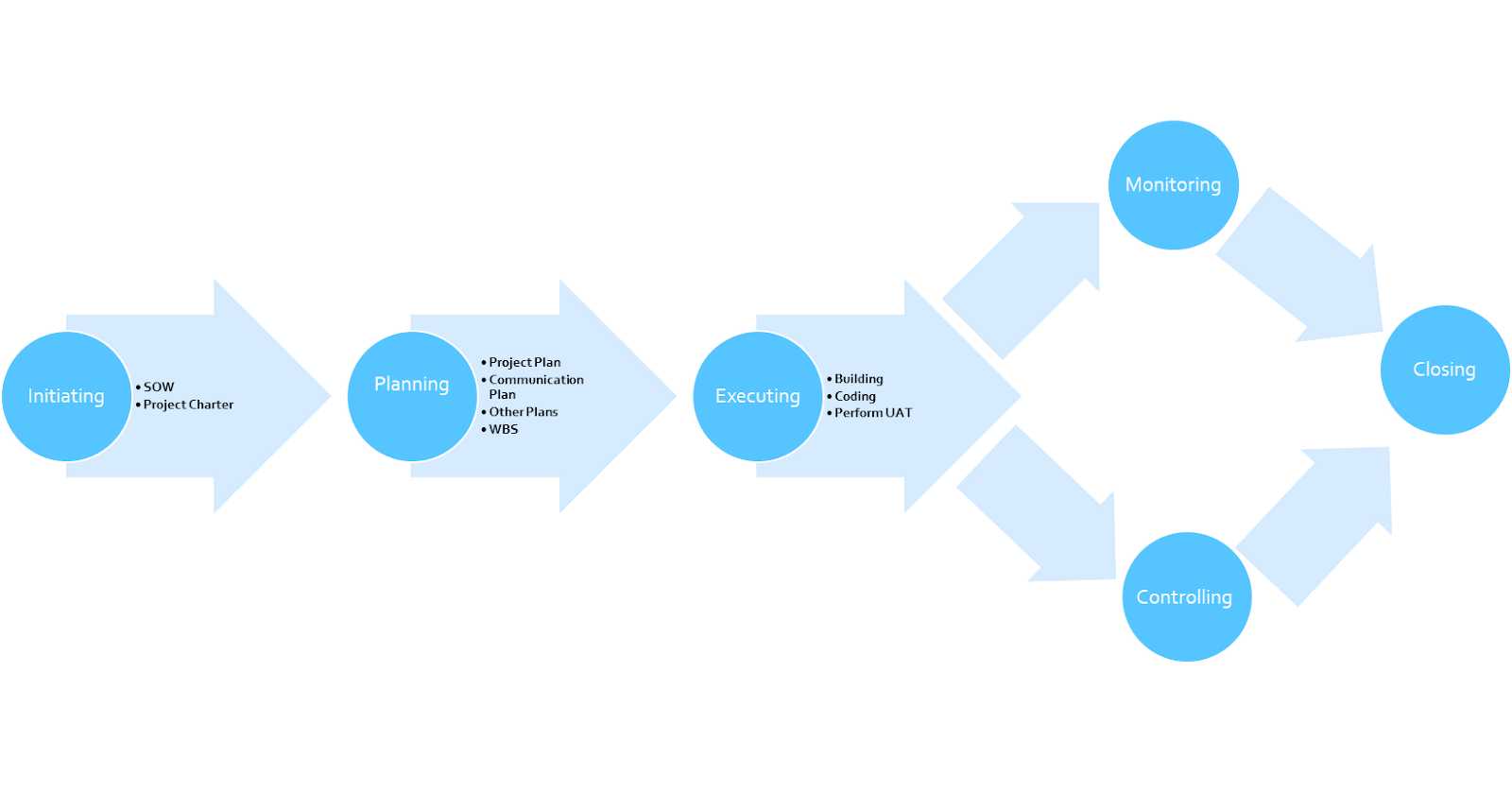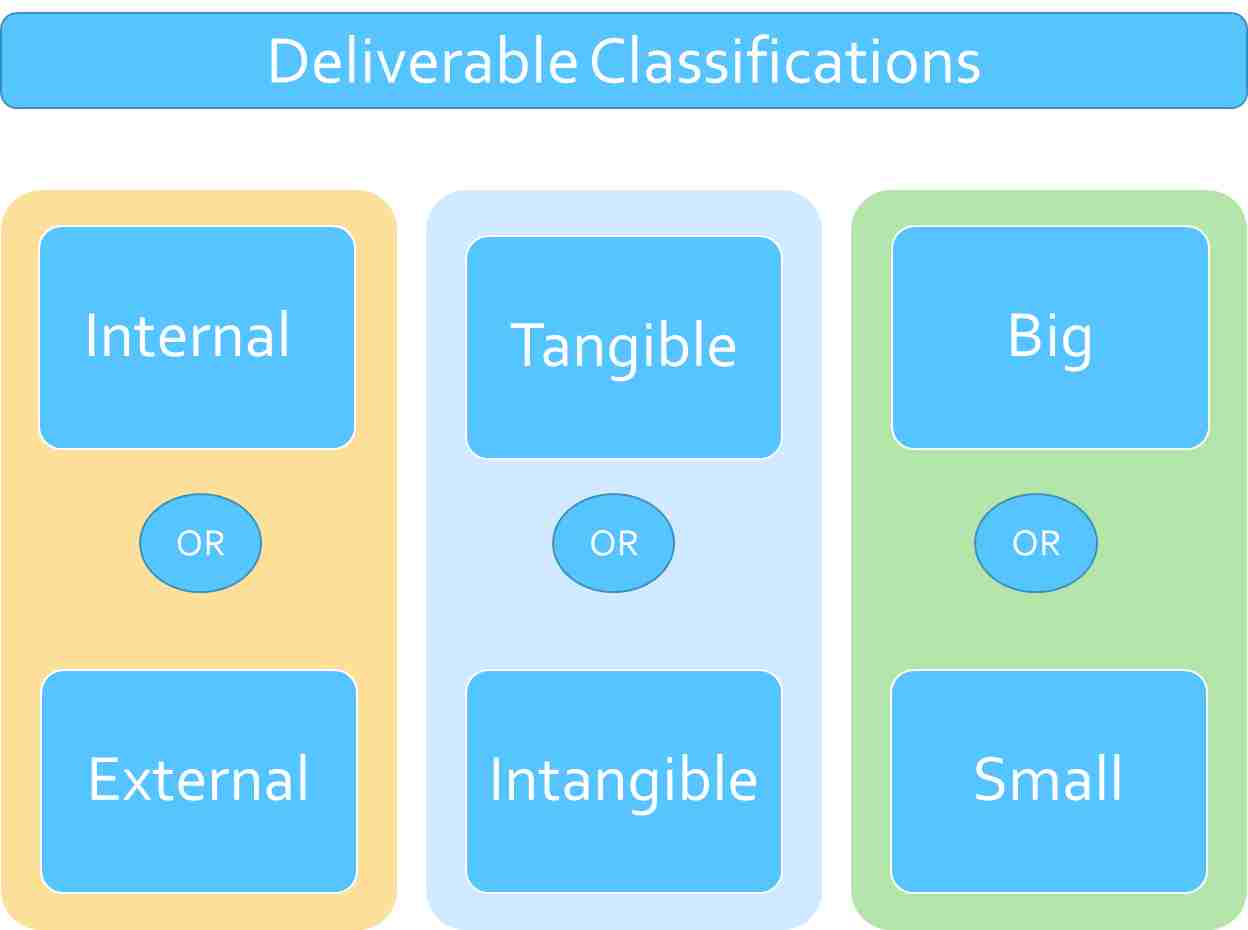Project Deliverables: What are they and why are they important?
Let us understand what are Project Deliverables?
First, we need to understand what is a project? Can anything be categorized as a project? Well, the answer is No!!
A project is an activity to create a unique product or service. It has a finite duration. The project is temporary. So, routine, repeated activities would not form a project. E.g. Building a football stadium is a project. It may take six months to a year to build it. The output of the project (The football stadium) will remain there indefinitely. Maintenance of the stadium would be a routine activity and not be categorized as a project.

Project Management strives to get the project goals done within the triple constraints. These include scope, time, cost and quality.
A deliverable is a tangible or intangible good or service produced as a result of a project that is intended to be delivered. A deliverable could be a report, a document, a software product, a server upgrade or any other building block of a project. It can also be called as something definite or specific created by the work performed during the project. Any deliverable must meet a few criteria.
Should be within Scope of project
Internal and External stakeholders should agree on the deliverable
Should help achieve the objectives of the project
Should be something definite or specific
Anything that is promised to the customer as an output of the project can be considered as a deliverable.
Deliverables chart the path to reach project objectives. The probability of meeting the project’s goal increases as you complete the deliverables as per schedule.
Therefore, project deliverables are the key to a project’s success. Hence project managers focus on them on high priority.
Deliverables can be classified as
1. External or Internal
2. Tangible or Intangible
3. Big or Small

External or Internal:
External deliverables are those you would deliver as an outcome of a project. It would be something that would meet the customer’s demand. So, this is the actual business or purpose for what the project is being executed.
Project deliverables can be created for both external and internal stakeholders. An example of the former would be the website you make for a client. A design requirements document would be an example of the latter.
Internal deliverables are those which would assist in accomplishing the project objectives. These are created as part of the execution of the project. These are required to run the business or project. Creating documents, government or statutory reports, keeping accounts, etc are some examples.
Tangible or Intangible:
A deliverable can be tangible like a football ground, a factory. Sometimes you need to conduct training so that resources can work on the project. So, you may have a project to train the employees. This would be intangible.
Big or Small:
Big or small can be categorized by customer. So, it would depend on the requirement. There is no specific guideline to this. Something small for one project/customer can be big for another project/customer.
Now, let us look at some key project deliverables examples in different phases of a project.
Project Charter:
This is the most important project deliverable. The project does not exist without a project charter. It has the main objective of the project.
It provides an overview of roles and responsibilities. It identifies the main stakeholders and specifies the project objectives. It gives the project manager his authority.
The purpose of the project charter is to document:
1. Project Objectives
2. Constraints of the project
3. Internal & External Stakeholders
4. In-scope activities
5. Out-of-scope activities
6. Assumptions
7. Benefits of projects outcomes
8. Positive & Negative Risks
9. High-level budget and spending authority
The three main uses of the project charter are:
a. To authorize the project. Using a comparable format, projects can be ranked. They can be authorized by return on investment.
b. Serves as the primary sales document for the project - ranking. Stakeholders have a 1-2-page summary to distribute, present and keep handy. This helps to fend off other project running for same project resources.
c. Serves as a focal point throughout the project. For example, it is a baseline that can be used in team meetings. It assists with scope management in change control meetings.
For a large multi-phased project, the charter can be created for each individual phase. A project charter will be created in the initiating process group of a phase or a project at the very start. Developing the charter and identifying the stakeholders are the two main actions of the initiating process group.
Inputs to develop a charter can be:
Project Statement of Work
Business Case
Agreements
Assumptions
Enterprise standards, industry standards, regulations, and norms
Organizational process, assets, and templates
Typically, a project manager takes the lead in developing the charter. The project manager will use his or her expertise and experience to develop the charter. The project manager will work with the key stakeholders (customers and business sponsors) and the PMO. He will include subject matter experts inside and outside the organization too. He may also work with Industry groups or professional bodies to develop the charter. The project manager will use facilitation techniques to develop the project charter. These could be brainstorming, problem-solving, conflict resolution, meetings, expectations management, etc.
Once the project charter is signed, it will provide authority to the project manager. He can then execute the project. He will employ organizational funds and resources to make the project successful.
Statement of Work (SOW):
A statement of work is a document used in project and contract. It has a working agreement between the concerned parties. It is a legal document. It is between client, buyer or government entity, agency, vendor. SOW typically includes the scope, assumptions, schedule, cost, exceptions, out of scope. It may also include travel agreement and work location. It is recommended to include client responsibilities, vendor responsibilities, and escalation process. As a best practice include, terms for termination and force majeure.
Work Break down structure (WBS):
A WBS is a key project deliverable. It organizes the team's work into manageable sections. A project can be broken into smaller components. These components can be further broken down in sub-components. Sub-components can be broken down into task or other components. We would go to a level where each task or component can be estimated reasonably. This forms the framework for cost and effort estimation. This will also be used to develop a schedule.
Basically, WBS should include all the work required to be done in the project. Anything which is not in WBS is not part of the project. All projects (large and small) require a WBS. It is a required element in project management.
Follow the below points for creating a WBS:
Involve the team, so that you get their Buy-In
Go one level at a time
Each level of WBS is a sub-level (a smaller piece) of the level above
The entire project is summarized by looking at all the levels of a WBS
WBS does not include anything that is out of the project’s scope
A deliverable is considered a work package if, it can be estimated reasonably and confidently. It can be completed quickly and without interruption.

- Project Scope Statement:PMBOK® defines Project Scope as the “The work that needs to be accomplished to deliver a product, service, or result with the specified features and functions.” Deliverables are derived from project requirements. The project scope statement is primarily an output of the Define Scope Process.The scope that is not approved: The project manager should identify areas where people requested scope. However, these were not approved to be included in the project.The scope that is not needed: Project manager should clarify areas where the scope could easily be misunderstood. These may not be needed for the project but are included in the scope.Scope baseline is a combination of the project scope statement, WBS and WBS dictionary. Scope baseline is a part of the project management plan.Project Scope statement can include:
Product Scope- Project Scope
- Deliverables
- Acceptance criteria of the product
- Out of scope activities
- Constraints and assumptions
- Project Plan:
A project plan is a document that contains a project scope and objective. It is also called the Project Management Plan. It is most commonly represented in the form of a Gantt chart to make it easy to communicate with stakeholders.- A project plan is a formal document. It needs to be approved by the sponsor. Project execution and control guidelines are included in it. It provides planning assumptions and decisions. It has the scope, cost, and schedule baselines. A project plan can be a high-level summary or very detailed. It provides guidelines for communication between the stakeholders.
- It may further include any of the following, based on the project requirements:
- Communication Management Plan
- Human Resources Management Plan
- Procurement Plan
- Stakeholder Management Plan
- Risk Management Plan
Quick Recap:
Project Deliverables can be the actual output of the project. These can also be something created in the process to achieve the project output. These can be external/internal OR Tangible / Intangible OR Big / Small. The project deliverables will vary from project to project. It would depend on the project requirements. There is a high focus on completion of project deliverables of time. This increases the probability of the project's success. We also went through some key project deliverables.
Click here to kickstart your Project Management career
